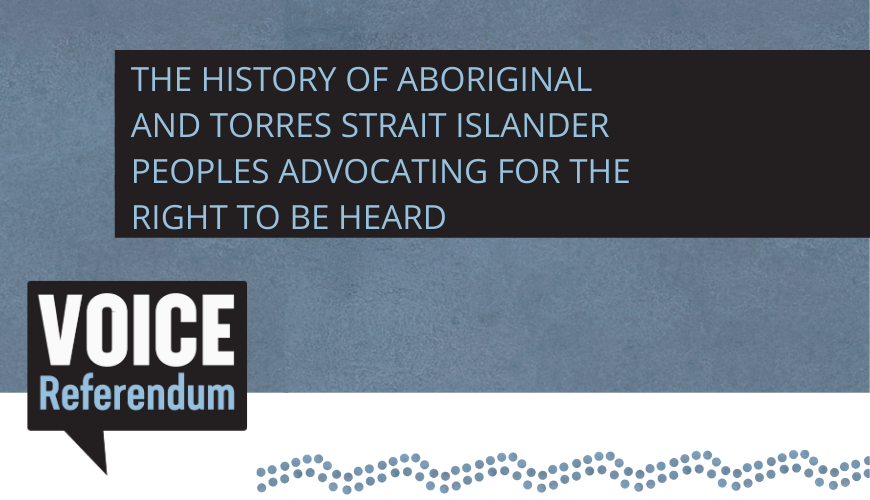The history of Aboriginal and Torres Strait Islander peoples advocating for the right to be heard

There is a long history of First Nations people advocating for the right to representation and participation in decisions that affect them. Although colonisation has significantly disrupted First Nations Law, structures and culture, Aboriginal and Torres Strait Islander peoples have persevered, demonstrating remarkable strength, resilience and tenacity when engaging with the Australian nation state to have their rights recognised.
First Nations peoples have resisted state-sanctioned injustice since colonisation began, well before the events listed below. Early examples include mass protests against the inhumane treatment and living conditions imposed upon residents of Aboriginal reservations, such as the Cummeragunja walk-off. The swell of support for change sparked by the Indigenous protest movement in Australia has led to changes to the Constitution in the past, as with the 1967 referendum. Much like the referendum taking place this year, the 1967 referendum was not initiated by a single event, but rather decades of growing national and international advocacy and support for change.
The events listed below are a selection of moments in history when Aboriginal and Torres Strait Islander peoples have taken action to call for large-scale change by Australian governments to realise their Indigenous rights.
WARNING: Aboriginal and Torres Strait Islander readers are warned that the following timeline contains names of deceased persons.
Please note, the following timeline uses culturally inappropriate terms of reference that have contributed to the historical erasure of hundreds of distinct Nations, languages and cultures that make up the lands now known as 'Australia'. Terminology can change over time, and it is best practice to find out what the preferred term is from the respective Aboriginal and/or Torres Strait Islander group or individual you are referring to.
This is the fourth of nine resources about the 2023 referendum, produced by the Commission. View the full Voice referendum: Understanding the referendum from a human rights perspective resource kit.
Timeline
- 1933-8: William Cooper Petition
- 1936: Torres Strait Maritime Strike
- 1938: Day of Mourning
- 1963: Yirrkala Bark Petitions
- 1965: The Freedom Ride
- 1972: Aboriginal Tent Embassy
- 1988: The Barunga Statement
- 1990: Establishment of ATSIC
- 1988-92: Mabo Decision
- 1994: Establishment of Torres Strait Regional Authority
- 1998: National Sorry Day
- 2007: UNDRIP Adopted by the United Nations General Assembly
- 2009: Establishment of National Congress of Australia’s First Peoples
- 2016-17: The Redfern Statement
- 2017: The Uluru Statement from the Heart
